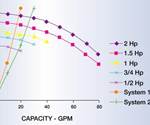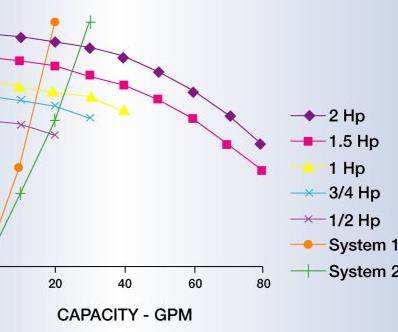Mold Temperature Control Technology Offers More Uniform, Precise Cooling
A new mold temperature control technology has been developed that affects the two most important things in mold cooling: flow rate and temperature.
A new mold temperature control technology has been developed that affects the two most important things in mold cooling: flow rate and temperature. The temperature and flow requirements are created at the mold—which reduces cycle times and increases productivity—and thus better mold performance no matter the material.
Microgel technology, developed by Lake Zurich, IL-based Frigel North America—a provider of process cooling systems—is used at the press rather than circulation water via a central cooling system. According to Frigel Systems Engineer Manager Randy Burgardt, this method allows molders to get high turbulent flow throughout the mold, leading to more uniform and precise cooling. “All units are set independently of one another, allowing water to flow through the mold at the exact temperature needed for optimal part molding and faster cycle times,” Burgardt notes.
Taking Control
A single Microgel two-zone chiller/TCU unit can both heat and cool a mold simultaneously, thus allowing different temperatures in multiple zones throughout the mold so cooling is more precise. This unit replaces the need for portable chillers and individual temperature control units at each machine and costs much less than that configuration as well. A Turbogel unit also is available—a unit without cooling capabilities for those applications like higher temperature resins, which don’t require cooling.
“One of the problems in the molding arena was the inability to adjust the parameters required at the tool,” Burgardt explains. “If a molder has a number of molding machines at a plant he is circulating water at 50 or 60 degrees. If one mold requires 40-degree water and another that requires 50-degree water, six molds that require 60-degree water, then this water has to be run at the lowest temperature, and then heated up at all of the other machines, which is basically what a standard temperature controller does. With our system, we circulate water 10 degrees above ambient—which is typically between 75 and 95 degrees—and the Microgel creates water at the temperature the molder needs at that particular tool.”
The unit uses a pumping system to create flow at the tool. “This system is always dynamic because if there is a circulating loop of water and the water is directly connected to a tool, when one tool is shut down to make a mold change or a solenoid valve opens on another machine, then the flow to the tool the molder wants to control has changed,” Burgardt says. “The flow is always changing if flow isn’t generated at the press. This technology guarantees that the temperature and pressure will not change—regardless of what happens on other presses in the system.”
Features
These portable units are available on casters and they can be rolled right up beside the press and hook up to the cooling source—giving molders the ultimate flexibility of adjusting the temperature right at the press, Burgardt notes.
Burgardt adds that this unit also performs automatic preheating and mold draining; has high cooling efficiency and low temperature difference on the mold (see Illustration), simplifies and reduces dead times for “mold change” and pre-heating, and keeps molds clean, eliminating need for scale and lime removal.
“The constant pressure and the ability to have the right temperature at each specific machine that this unit offers all goes back ultimately to the reduction of cycle time,” Burgardt comments. “Thus, molders can be more productive because of it. And moldmakers who are familiar with this technology can recommend it to molders because they know it will make their molds perform better.”
Related Content
The Role of Social Media in Manufacturing
Charles Daniels CFO of Wepco Plastics shares insights on the role of social media in manufacturing, how to improve the “business” side of a small mold shop and continually developing culture.
Read MoreOEE Monitoring System Addresses Root Cause of Machine Downtime
Unique sensor and patent-pending algorithm of the Amper machine analytics system measures current draw to quickly and inexpensively inform manufacturers which machines are down and why.
Read MoreMaking Mentoring Work | MMT Chat Part 2
Three of the TK Mold and Engineering team in Romeo, Michigan join me for Part 2 of this MMT Chat on mentorship by sharing how the AMBA’s Meet a Mentor Program works, lessons learned (and applied) and the way your shop can join this effort.
Read MoreEditorial Guidelines: Editorial Advisory Board
The Editorial Advisory Board of MoldMaking Technology is made up of authorities with expertise within their respective business, industry, technology and profession. Their role is to advise on timely issues, trends, advances in the field, offer editorial thought and direction, review and comment on specific articles and generally act as a sounding board and a conscience for the publication.
Read MoreRead Next
Mold Cooling Optimization From a Moldmaker's Perspective
Mold cooling is the single most important factor in terms of mold productivity. Mold cooling improvements will influence cycle time and part quality - both of which will directly impact profitability.
Read MoreHow to Use Continuing Education to Remain Competitive in Moldmaking
Continued training helps moldmakers make tooling decisions and properly use the latest cutting tool to efficiently machine high-quality molds.
Read MoreAre You a Moldmaker Considering 3D Printing? Consider the 3D Printing Workshop at NPE2024
Presentations will cover 3D printing for mold tooling, material innovation, product development, bridge production and full-scale, high-volume additive manufacturing.
Read More
















